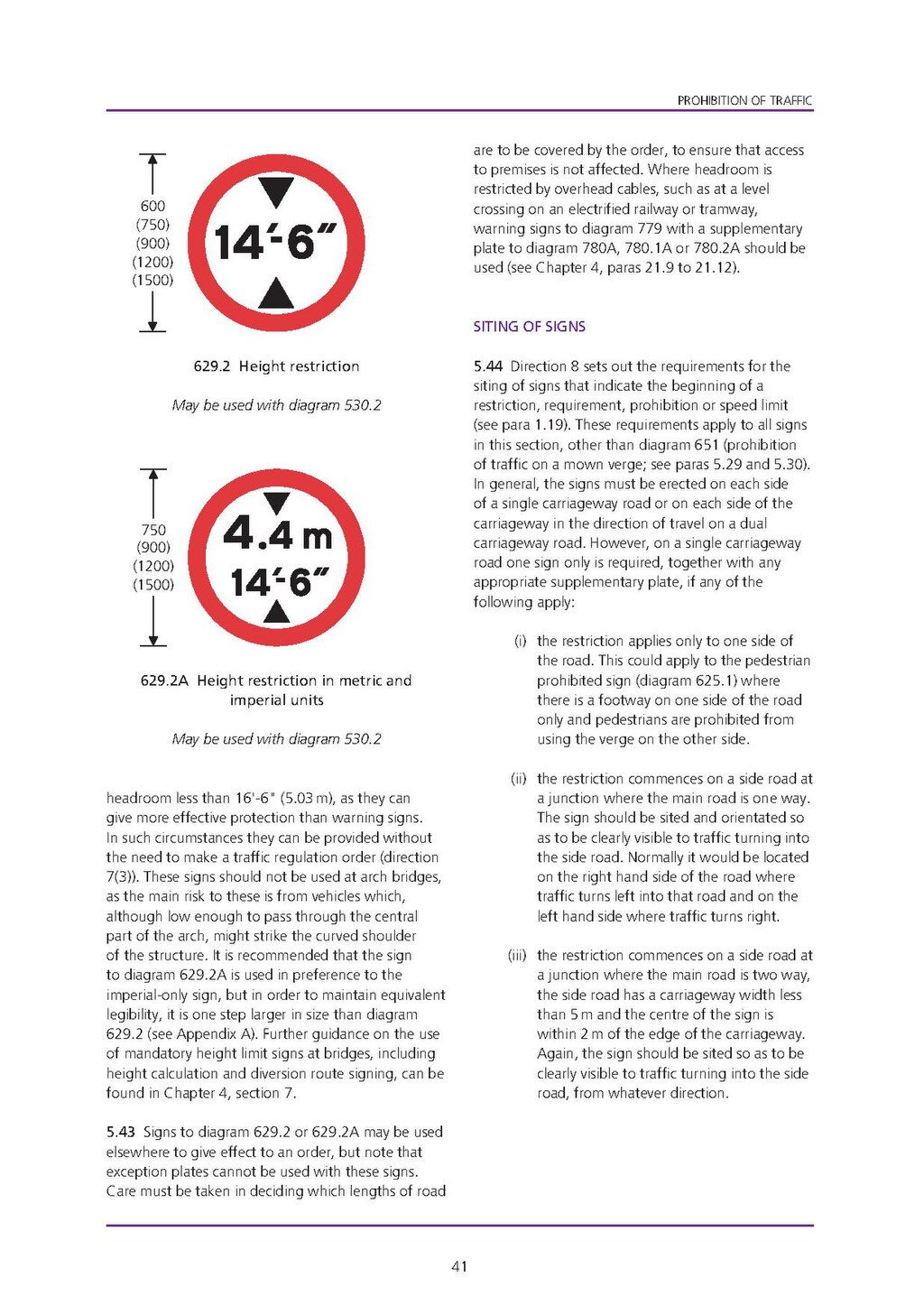headroom less than 16'-6" (5.03 m), as they can give more effective protection than warning signs. In such circumstances they can be provided without the need to make a traffic regulation order (direction 7(3)). These signs should not be used at arch bridges, as the main risk to these is from vehicles which, although low enough to pass through the central part of the arch, might strike the curved shoulder of the structure. It is recommended that the sign to diagram 629.2A is used in preference to the imperial—only sign, but in order to maintain equivalent legibility, it is one step larger in size than diagram 629.2 (see Appendix A). Further guidance on the use of mandatory height limit signs at bridges, including height calculation and diversion route signing, can be found in Chapter 4, section 7.
629.2 Height restriction
May be used with diagram 530.2
629.2A Height restriction in metric and imperial units
May be used with diagram 530.2
5.43 Signs to diagram 629.2 or 629.2A may be used elsewhere to give effect to an order, but note that exception plates cannot be used with these signs. Care must be taken in deciding which lengths of road are to be covered by the order, to ensure that access to premises is not affected. Where headroom is restricted by overhead cables, such as at a level crossing on an electrified railway or tramway, warning signs to diagram 779 with a supplementary plate to diagram 780A, 780.1A or 780.2A should be used (see Chapter 4, paras 21.9 to 21.12).
SITING OF SIGNS
5.44 Direction 8 sets out the requirements for the siting of signs that indicate the beginning of a restriction, requirement, prohibition or speed limit (see para 1.19). These requirements apply to all signs in this section, other than diagram 651 (prohibition of traffic on a mown verge; see paras 5.29 and 5.30). In general, the signs must be erected on each side of a single carriageway road or on each side of the carriageway in the direction of travel on a dual carriageway road. However, on a single carriageway road one sign only is required, together with any appropriate supplementary plate, if any of the following apply:
(i) the restriction applies only to one side of the road. This could apply to the pedestrian prohibited sign (diagram 625.1) where there is a footway on one side of the road only and pedestrians are prohibited from using the verge on the other side.
(ii) the restriction commences on a side road at a junction where the main road is one way. The sign should be sited and orientated so as to be clearly visible to traffic turning into the side road. Normally it would be located on the right hand side of the road where traffic turns left into that road and on the left hand side where traffic turns right.
(iii) the restriction commences on a side road at a junction where the main road is two way, the side road has a carriageway width less than 5m and the centre of the sign is within 2m of the edge of the carriageway. Again, the sign should be sited so as to be clearly visible to traffic turning into the side road, from whatever direction.
41


